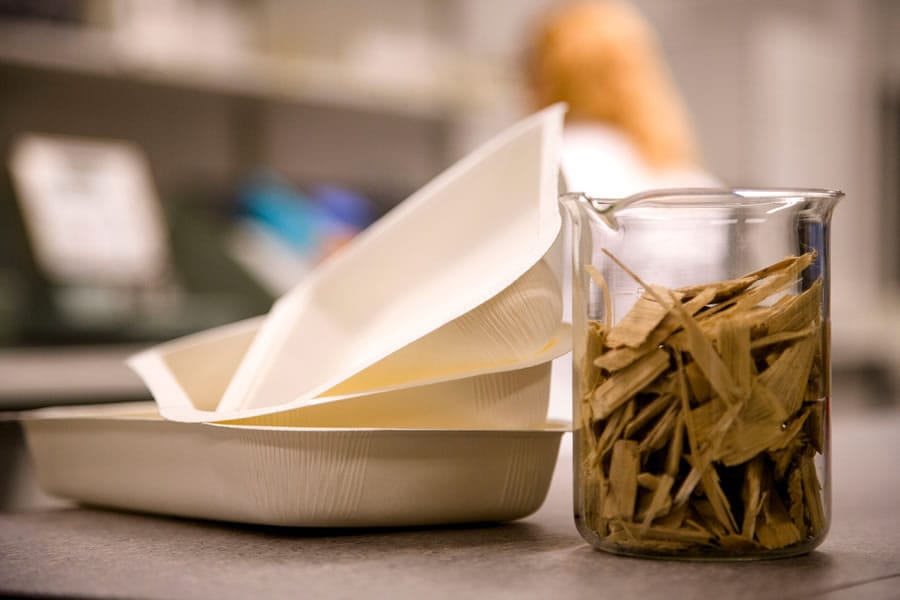
Eco-friendly packaging essay
Environmentally friendly product and respect for the environment today have become a way of life of many consumers. This trend is spreading very quickly and therefore causes a lot of anxiety on the part of producers, since it addresses the main aspects of the packaging industry: the material itself, its recycling, re-use, and transportation. In addition, since the consumer appreciates healthy products, successful can be only packages of safe materials, but at the same time those that can better and longer preserve the useful properties of the product and take into account its peculiarities.
The problems of ecological rationality are forcing companies to look for ways to reduce the amount of their packaging, create thinner and lighter solutions, get rid of secondary packaging where possible, and try to reduce or stop the emission of CO2 during production or recycling of packaging (Jedlicka, 2008; PWC, 2012). Moreover, there is a gradual shift of the packaging industry from polymers derived from petrochemicals (share of which in the packaging industry today is approaching 40%) to biopolymers – plastics made from renewable resources and to biodegradable photodisaggregating nanocomposites (Emblem & Emblem, 2012; Rhim & Ng, 2007; Perez‐Masia et al., 2013).
For example, the company Huhtamaki manufactures eco-friendly packaging, plastic made from corn which decomposes in the soil; Pepsi produced a 100% biopolymer bottle (Han, 2013). Technology of adding nanoparticles into the polymers improves the barrier properties of the materials, as well as their water resistance (Rhim & Ng, 2007). Today, there are already colored or transparent plastics on the market that disappear in a month, glass and metal suitable for instantaneous recycling or instantly corroding in the air not doing harm to nature (Perez‐Masia et al., 2013). Positioning of packaging as biodegradable now plays in favor of brand owners as a good marketing point (PWC, 2012; Simms & Trott, 2010; Mishra & Jain, 2012). In general, continuous introduction of new technologies aimed not only at improving the quality of packaging but also at expanding the range of use of biopolymers and their mass adoption in the commercial industry make it clear that nanomaterials market will successfully develop in the coming years together with the resolution of the issue of plastics recycling.
Indeed, waste disposal today is the number one question in the world. For instance, Americans throw away 2.5 million plastic bottles every hour (Nunnery, 2010). But the issue applies not only to disposal of packaging but the products themselves too. Costs associated with the throw-out of food amount huge sums: in the UK alone 8.3 million tons of not eaten expired or mistakenly identified as spoilt foods are discarded each year (Jedlicka, 2008). From this point of view, modern packaging faces an important challenge not only to protect the content but also to extend the durability of the product packaged.
Among the new packaging materials inspired by the needs and demands of consumers for safety, the most noteworthy are the smart films, QLF-film, controlling the migration of oxygen and carbon dioxide between the package and the ambient air for breathing products to prevent bacterial growth (Emblem & Emblem, 2012; Rhim & Ng, 2007; Zettlemoyer, 2008). In addition, while until very recently it was believed that there should be no interaction between the package and the contents or it should be minimal, active packaging technology today contradicts this rule.
In AP, the product, the package and the environment affect each other mutually due to the inclusion of substances performing the task of active protection of the packaged food, for example, from the impact and development of micro-organisms or occurrence of odours or tastes (e.g. oxygen scavengers, carbon dioxide scavengers, potassium permanganate, calcium oxide, etc.) (Emblem & Emblem, 2012; Perez‐Masia et al., 2013; Zettlemoyer, 2008). For instance, Odour and Taste Control technology developed and patented by Du Pont consists in including in the packaging material the molecular sieves based on aluminosilicate with pore diameter of at least 5.5nm, which connect a number of volatile compounds released during the aging process from food products (Han, 2013). Thus, new technologies have made possible the change or rather the expansion of the functions of the package from inactive, indifferent barrier to external influences to an active player in protecting the packaged product.
Furthermore, the function of packing is now stretched to include signaling consumers about the freshness of their food, as soon as a number of researches demonstrated that the information on the package about the product itself, its composition, hygienic standards, recommendations of various institutions and ministries, expiry date is becoming increasingly important for the consumer (PWC, 2012; Mishra & Jain, 2012; Jedlicka, 2008). For example, in the UK a special package has been developed with a screen showing the time left to the deadline of the sale (Han, 2013). Other examples are the invention of electro conductive packaging and smart polyethylene with a sensor of titanium oxide nanoparticles, which changes color in the presence of oxygen thus signaling to the consumer that the product has spoilt (Rhim & Ng, 2007; Perez‐Masia et al., 2013; Han, 2013).
Thus, food and industrial wastes associated with improper packaging of products is an important issue that involves the loss of resources (products plus production costs), loss of associated resources (water, fertilizer, production), and huge carbon emissions. Package sustainability issue is closely linked to the social development and way of life, however, extended and strictly controlled shelf life due to innovative green packaging is able to both reduce waste and increase product safety.

